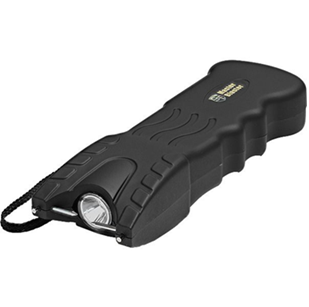How to Protect Your House Against Wildfires
 Wildfires have become a growing threat, particularly in regions like California, where dry conditions, high winds, and rising temperatures create the perfect conditions for devastating blazes. While some factors contributing to wildfires are beyond individual control, homeowners can take numerous proactive steps to safeguard their properties and increase their chances of survival. This guide will walk you through the most effective strategies to protect your home from wildfires, ranging from landscaping techniques to structural improvements and emergency preparedness plans.
Wildfires have become a growing threat, particularly in regions like California, where dry conditions, high winds, and rising temperatures create the perfect conditions for devastating blazes. While some factors contributing to wildfires are beyond individual control, homeowners can take numerous proactive steps to safeguard their properties and increase their chances of survival. This guide will walk you through the most effective strategies to protect your home from wildfires, ranging from landscaping techniques to structural improvements and emergency preparedness plans.
Understanding Wildfire Risk
Before taking action, it's important to understand how wildfires spread and why some homes are more vulnerable than others. Wildfires spread through three primary mechanisms:
-
Embers: Burning debris can travel miles ahead of the main fire, igniting structures, vegetation, and other flammable materials.
-
Direct Flames: If flammable materials like wood decks or overgrown vegetation are close to your home, direct flames can quickly engulf the structure.
-
Radiant Heat: Extreme heat from nearby fires can cause materials to combust, even if flames never touch them.
By recognizing these risks, you can take appropriate steps to create defensible spaces and harden your home against fire threats.
Creating Defensible Space
A defensible space is a buffer zone between your home and surrounding vegetation that slows the spread of wildfire and provides firefighters with a safer area to work. This space is typically divided into three zones:
Zone 1: Immediate Zone (0-5 feet from the home)
This area should be as fire-resistant as possible. Consider the following actions:
-
Use non-combustible materials: Replace wooden decks, fences, and mulch with gravel, concrete, or other fire-resistant materials.
-
Keep the area clear: Remove dead vegetation, leaves, and flammable debris from the roof, gutters, and around the foundation.
-
Install fire-resistant plants: Choose low-growing, high-moisture plants that are less likely to ignite.
-
Relocate flammable objects: Move firewood, propane tanks, and outdoor furniture away from the home.
Zone 2: Intermediate Zone (5-30 feet from the home)
This zone should help slow the spread of fire by reducing flammable materials and creating space between trees and shrubs.
-
Thin vegetation: Maintain spacing between trees and shrubs to prevent fire from jumping.
-
Keep grass short: Mow lawns regularly to keep grass below four inches.
-
Prune trees: Trim lower tree branches to at least six feet above the ground to prevent ground fires from spreading.
-
Use fire-resistant landscaping: Consider stone walkways and water features to act as firebreaks.
Zone 3: Extended Zone (30-100 feet from the home)
This zone reduces the intensity of a wildfire before it reaches your home.
-
Reduce fuel sources: Clear dead trees, fallen branches, and thick underbrush.
-
Maintain spacing: Keep trees at least 10-15 feet apart to prevent fire from spreading through the canopy.
-
Create breaks: Install driveways, gravel paths, or water sources to slow fire spread.
Fire-Resistant Home Improvements
Beyond landscaping, making your home more resistant to wildfires is crucial. Consider these home-hardening techniques:
Roof and Gutters
-
Choose fire-resistant roofing materials: Metal, tile, asphalt shingles with a Class A fire rating are the best options.
-
Clean gutters regularly: Remove dried leaves and debris to prevent ember ignition.
-
Install gutter guards: These help keep debris out and reduce fire risk.
Windows and Vents
-
Use tempered glass windows: Double-paned or tempered glass withstands heat better than single-pane windows.
-
Install ember-resistant vents: Fine mesh screens (1/8 inch or smaller) prevent embers from entering attics and crawl spaces.
Walls and Siding
-
Opt for fire-resistant siding: Materials like stucco, fiber cement, brick, or metal reduce the chance of ignition.
-
Seal gaps and cracks: Prevent embers from entering small openings in walls, roofs, and around doors.
Decks and Fences
-
Use fire-resistant decking materials: Metal, composite, or concrete decks are safer than wood.
-
Maintain clearance under decks: Remove combustible materials stored underneath.
-
Break fence connections: A wooden fence attached to the home can act as a fire pathway. Use a metal or masonry break near the house.
Emergency Preparedness
Even with the best prevention efforts, wildfires can still occur. Having an emergency plan ensures that you and your family can evacuate safely and protect valuable belongings.
Create a Wildfire Action Plan
-
Identify escape routes: Plan multiple evacuation routes in case roads are blocked.
-
Establish communication: Set a meeting place and contact person outside the fire zone.
-
Prepare an emergency kit: Include essentials such as food, water, medications, important documents, and protective gear.
-
Sign up for alerts: Register for local emergency notifications to receive real-time updates.
Fireproof Your Home Interior
-
Use fire-resistant curtains and furniture: Opt for non-flammable fabrics and materials inside your home.
-
Have fire extinguishers ready: Place them in easily accessible locations throughout the house.
-
Install smoke detectors and alarms: Ensure all systems are functional and test them regularly.
Community and Government Resources
Protecting your home isn’t just an individual effort. Engaging with your community and local government can provide additional support.
Join Firewise USA
Firewise USA is a community-based program that helps neighborhoods reduce wildfire risk through education and action plans. Participating communities receive resources and support to implement fire-safe practices.
Work with Local Fire Departments
-
Request home assessments: Many fire departments offer inspections to identify vulnerabilities.
-
Attend community meetings: Stay informed about fire hazards and evacuation plans.
Advocate for Fire-Resistant Infrastructure
-
Support local regulations: Encourage policies that require fire-resistant building materials and defensible space requirements.
-
Promote controlled burns: These reduce excess vegetation that fuels wildfires.
Conclusion
Wildfires are an increasing threat, especially in fire-prone areas like California. However, by implementing defensible space strategies, hardening your home against fire, and preparing for emergencies, you can significantly reduce the risk of losing your home. Wildfire protection requires continuous effort, but with the right steps, you can enhance your home's resilience and safeguard your family's safety. Stay proactive, stay informed, and take action today to protect what matters most.
Company Info
Customer Service
Product Information
- TASER® and Stun Devices Regulations by State
- TASER® Safe Escape Product Replacement Guarantee
- TASER® Comparison Chart
- TASER® User Manuals
- TASER® Warranty Info
- Byrna Product Catalog
- PepperBall Manuals & Spec Sheets
- Pepper Spray Laws
- Air Gun Laws
- States that Restrict Automatic and Butterfly Knives
- Our Print Catalog



































































